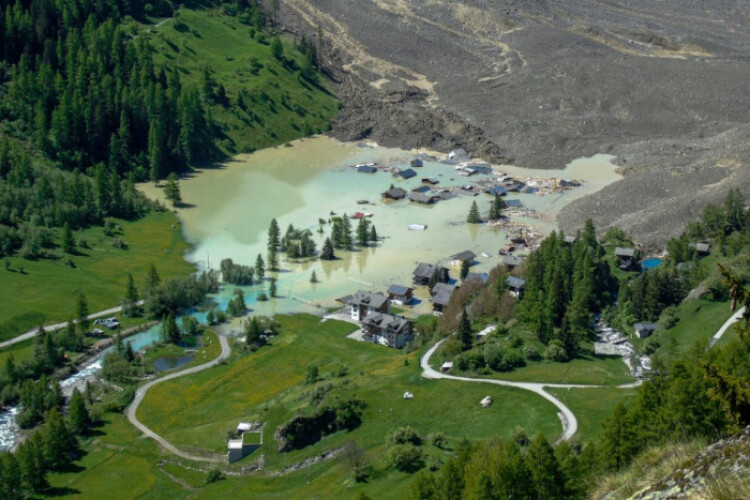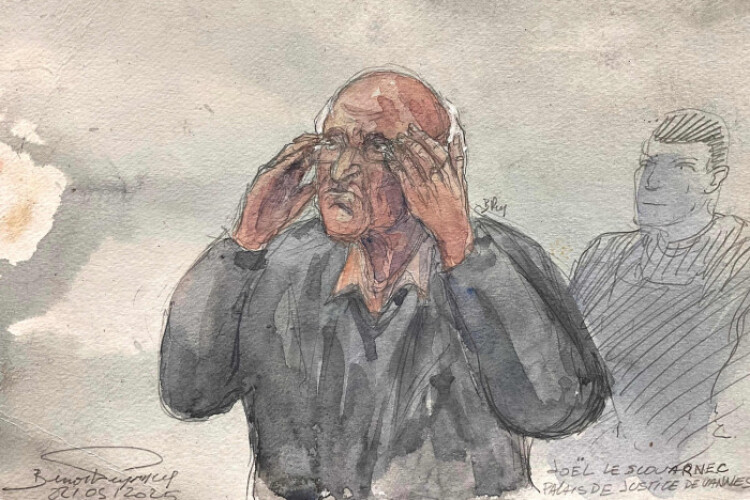
WASHINGTON — United States President Donald Trump unveiled plans for his "Golden Dome" missile defence shield Tuesday, predicting that the ambitious plan to expand the country’s air defence system would be completed by the end of his term.
US officials have said the Golden Dome is necessary to protect against "catastrophic attacks," but experts say it faces logistical and financial hurdles.
The project has been a priority for Trump since he took office. He promised during the campaign to build a defence system against foreign attacks similar to Israel’s Iron Dome, with air defence capabilities that intercept rockets and missiles.
The United States is more than 400 times larger than Israel.
Trump has said the project will cost US$175 billion, although the Congressional Budget Office said it would likely cost far more, as much as $542 billion. The president said Tuesday that the Golden Dome would get $25 billion in funding from his domestic policy bill, which has yet to pass Congress, and that Canada had expressed interest in taking part in the program and could share in some of its cost.
Trump said he was confident that the United States could complete the project in about three years and be "fully operational before the end of my term." He called it “as close to perfect as you can have, in terms of real production.”
“Once fully constructed, the Golden Dome will be capable of intercepting missiles even if they are launched from other sides of the world, and even if they are launched from space, and we will have the best system ever built," Trump said.
In a January executive order titled "Iron Dome of America," Trump gave the Pentagon 60 days to submit details for the plan, which included accelerating development of US hypersonic missiles and "space-based interceptors."
Administration officials said that Trump's project, which the Pentagon named the Golden Dome in a nod to Trump’s favourite colour and metal, would be a next-generation military system designed to guard against a variety of ballistic, hypersonic and cruise missiles, which have been successfully deployed by adversaries such as Russia.
Trump's order said that the possibility of those and other advanced aerial attacks "remains the most catastrophic threat facing the United States."
Defence Secretary Pete Hegseth, who joined Trump in the Oval Office on Tuesday, called the project a "game changer" and "a generational investment in the security of America."
Trump also announced that Gen Michael Guetlein, the vice chief of space operations at the Space Force, would be overseeing the project.
Michael Guetlein, vice chief of space operations for the US Space Force, in the Oval Office of the White House in Washington, DC, US, on Tuesday. (Photo: Bloomberg)
Guetlein said during the Oval Office announcement that while the United States has been focusing on peace overseas, adversaries had been modernising their nuclear forces and building their ballistic capabilities — including hypersonic missiles capable of attacking the United States within an hour and travelling at 6,000 miles (9,656 kilometres) per hour.
"It is time that we change that equation and start doubling down on the protection of the homeland," Guetlein said.
But shielding the United States from such attacks presents technical challenges. The physics of defending America’s vast territory against an incoming intercontinental missile is wildly more complicated than protecting Israel against the smaller rocket attacks it faces.
Experts also said that the cost of building one for the United States could prove a heavy financial burden. While Trump stands a chance at getting the $25 billion in the spending bill under consideration in Congress, estimates from the Congressional Budget Office found that it could cost $161 billion to $542 billion to build the system.
The project gives Trump a chance to realise a vision of former President Ronald Reagan. In the 1980s, Reagan spent billions to build a defence system, known as "Star Wars," against potential nuclear attack. The initiative ultimately failed because of technological and budget challenges.
Trump said that he did not think his Golden Dome would suffer the same fate.
"Ronald Reagan wanted it many years ago, but they didn’t have the technology," he said. "But it's something we're going to have. We're going to have it at the highest level."
This article originally appeared in The New York Times.
US officials have said the Golden Dome is necessary to protect against "catastrophic attacks," but experts say it faces logistical and financial hurdles.
The project has been a priority for Trump since he took office. He promised during the campaign to build a defence system against foreign attacks similar to Israel’s Iron Dome, with air defence capabilities that intercept rockets and missiles.
The United States is more than 400 times larger than Israel.
Trump has said the project will cost US$175 billion, although the Congressional Budget Office said it would likely cost far more, as much as $542 billion. The president said Tuesday that the Golden Dome would get $25 billion in funding from his domestic policy bill, which has yet to pass Congress, and that Canada had expressed interest in taking part in the program and could share in some of its cost.
Trump said he was confident that the United States could complete the project in about three years and be "fully operational before the end of my term." He called it “as close to perfect as you can have, in terms of real production.”
“Once fully constructed, the Golden Dome will be capable of intercepting missiles even if they are launched from other sides of the world, and even if they are launched from space, and we will have the best system ever built," Trump said.
In a January executive order titled "Iron Dome of America," Trump gave the Pentagon 60 days to submit details for the plan, which included accelerating development of US hypersonic missiles and "space-based interceptors."
Administration officials said that Trump's project, which the Pentagon named the Golden Dome in a nod to Trump’s favourite colour and metal, would be a next-generation military system designed to guard against a variety of ballistic, hypersonic and cruise missiles, which have been successfully deployed by adversaries such as Russia.
Trump's order said that the possibility of those and other advanced aerial attacks "remains the most catastrophic threat facing the United States."
Defence Secretary Pete Hegseth, who joined Trump in the Oval Office on Tuesday, called the project a "game changer" and "a generational investment in the security of America."
Trump also announced that Gen Michael Guetlein, the vice chief of space operations at the Space Force, would be overseeing the project.
Michael Guetlein, vice chief of space operations for the US Space Force, in the Oval Office of the White House in Washington, DC, US, on Tuesday. (Photo: Bloomberg)
Guetlein said during the Oval Office announcement that while the United States has been focusing on peace overseas, adversaries had been modernising their nuclear forces and building their ballistic capabilities — including hypersonic missiles capable of attacking the United States within an hour and travelling at 6,000 miles (9,656 kilometres) per hour.
"It is time that we change that equation and start doubling down on the protection of the homeland," Guetlein said.
But shielding the United States from such attacks presents technical challenges. The physics of defending America’s vast territory against an incoming intercontinental missile is wildly more complicated than protecting Israel against the smaller rocket attacks it faces.
Experts also said that the cost of building one for the United States could prove a heavy financial burden. While Trump stands a chance at getting the $25 billion in the spending bill under consideration in Congress, estimates from the Congressional Budget Office found that it could cost $161 billion to $542 billion to build the system.
The project gives Trump a chance to realise a vision of former President Ronald Reagan. In the 1980s, Reagan spent billions to build a defence system, known as "Star Wars," against potential nuclear attack. The initiative ultimately failed because of technological and budget challenges.
Trump said that he did not think his Golden Dome would suffer the same fate.
"Ronald Reagan wanted it many years ago, but they didn’t have the technology," he said. "But it's something we're going to have. We're going to have it at the highest level."
This article originally appeared in The New York Times.










